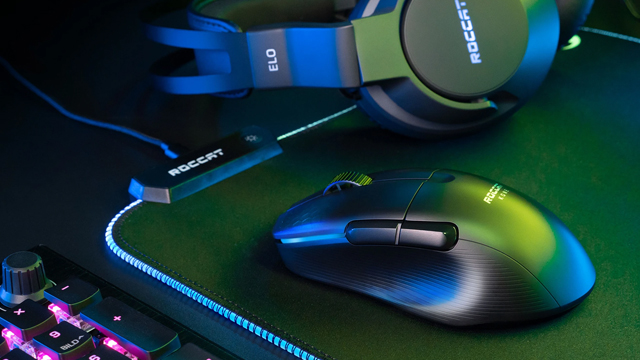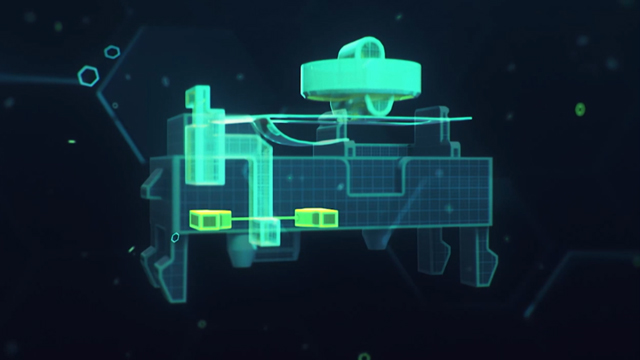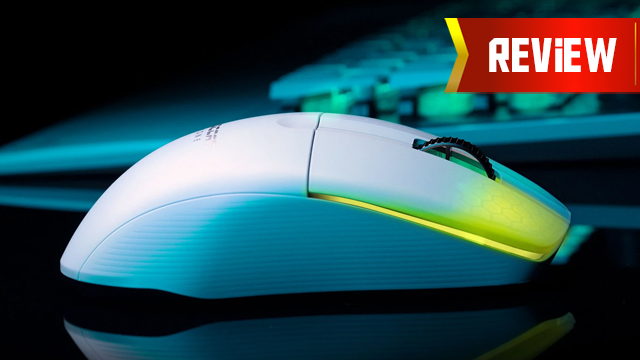ROCCAT KONE PRO AIR AND PRO REVIEW.
I’m a big fan of the direction that ROCCAT has been moving in. The company’s headsets and keyboards have been seriously on point, pushing the envelope in a market where many competitors are playing it safe. This is also the case with the new ROCCAT Kone Pro Air (wireless) and Pro (non-wireless) mice. What we have here is a larger mouse that prioritizes an ergonomic shape, while still maintaining the trending need to be lightweight. This the GameRevolution review.
Gaming on air

The shape of the Kone Pro Air and Kone Pro are what first struck me. Though they are larger than previous Kone models, they still maintain that satisfying ergonomic shape that essentially molds to the inside of my hand. As someone with larger hands, it’s rare that I can comfortably palm grip a mouse, so to have the Kone Pro Air fit like a glove was a lovely surprise.
Recommending a mouse based on its shape and size is difficult to do, as everyone’s hands and preferred grip styles are so different, but I think average to large hands will have a great time with this product. It’s very comfortable to use over long periods of time and has maintained a nice grippy feel throughout my testing.
These mice are also very light, despite opting against an external hole-filled honeycomb pattern. This bucks the trend of lightweight usually meaning “full of holes” and makes for a good aesthetic. The Kone Pro Air weighs 75g while the Kone Pro is 66g. Needless to say, these are effortless to move around the mousepad.
A curious part of the unboxing experience was that the wired Kone Pro comes with some additional mouse feet, which are missing in the Kone Pro Air. The wireless mouse also omits a USB dongle extension cable, which are sometimes included and allow the dongle to be placed closer to the mouse for a more dependable wireless connection. Despite this, I had zero disconnect or latency issues, even with the meter-wide gap between my PC and mouse.
RGB done right

Powering on the mouse reveals the unique RGB implementation. The lights are placed beneath the right and left clicks which are made of a translucent material, resulting in a soft, defused look. This strikes a good balance of illumination without being distracting.
The M1 and M2 buttons are responsive with little travel time. This makes rapidly firing a semi-automatic weapon in a first-person shooter considerably easier when compared to mice with a more mushy feel. ROCCAT is using its Titan Switch Optical here. The two side buttons are also large and tactile, which makes them easy to activate during intense virtual firefights. The scroll wheel is also sturdy and has a satisfying roll.
Full of ROCCAT tech
Other ROCCAT tech here includes the Owl-Eye 19K DPI optical sensor, which I found to be flawless in use, with no spinning out or latency on the wireless. Both mice also come with ROCCAT’s “PhantomFlex” cable, though the Pro’s is unremovable while the Pro Air connects via USB-C. Like other flexible cables, ROCCAT’s solution is imperceptible when moving the mouse around, providing there’s another room to maneuver or you make use of a mouse bungee.
Mouse feet can sometimes be a drag (literally), but ROCCAT has wisely chosen high-quality PTFE glides. This combines with the light weight to make for effortless movement.
Roccat Kone Pro Air vs Kone Pro

The difference between the Pro Air and Pro is, obviously, the wireless connectivity. Sure, there’s a slight weight difference, but it’s only nine grams. When it comes to wireless, the Pro Air has both 2.4 GHz and Bluetooth. As mentioned earlier, I had zero issues with latency on 2.4 GHz and no unwanted disconnects. Bluetooth suffers from a bit of latency, as expected for that tech, but the connection is fine for non-gaming tasks.
Battery anxiety can turn people off a wireless mouse, but I’m happy to report that the Kone Pro Air lasted a full 10 days before needing a recharge. Those were some heavy usage days filled with work and gaming at the PC. What’s more, the Rapid Charge feature means users can get five hours of playtime with just 10 minutes of charging, which can be pretty clutch.
ROCCAT’s Swarm software is developing nicely, with expected features laid out in a clean way. For the Pro Air, I’m especially happy to see a “Signal Strength” indicator. The only omission — as it’s missing on the mouse itself — is a dedicated DPI switching button. While I personally stick to 1600 for work and play, I know some PC users regularly switch between multiple DPIs depending on what they are doing or what weapon they are using in an FPS.
ROCCAT Kone Pro Air Review: The final verdict

The ROCCAT Kone Pro Air and Kone Pro come in at $129.99 and $79.99, respectively. This means that, when compared to the competition, they are at the higher end of the price range. It’s a daring move, given the competition and renowned brands out there. With that said, I’ve loved my time using them.
For those looking for a larger mouse that is still lightweight, which boasts a unique RGB implementation, and the biggest and best side buttons out there, the ROCCAT Kone Pro should absolutely be considered. And, for those demanding wireless. the Kone Pro Air delivers a top-tier cable-free experience.
Kone Pro Air and Pro review units were provided by ROCCAT.







